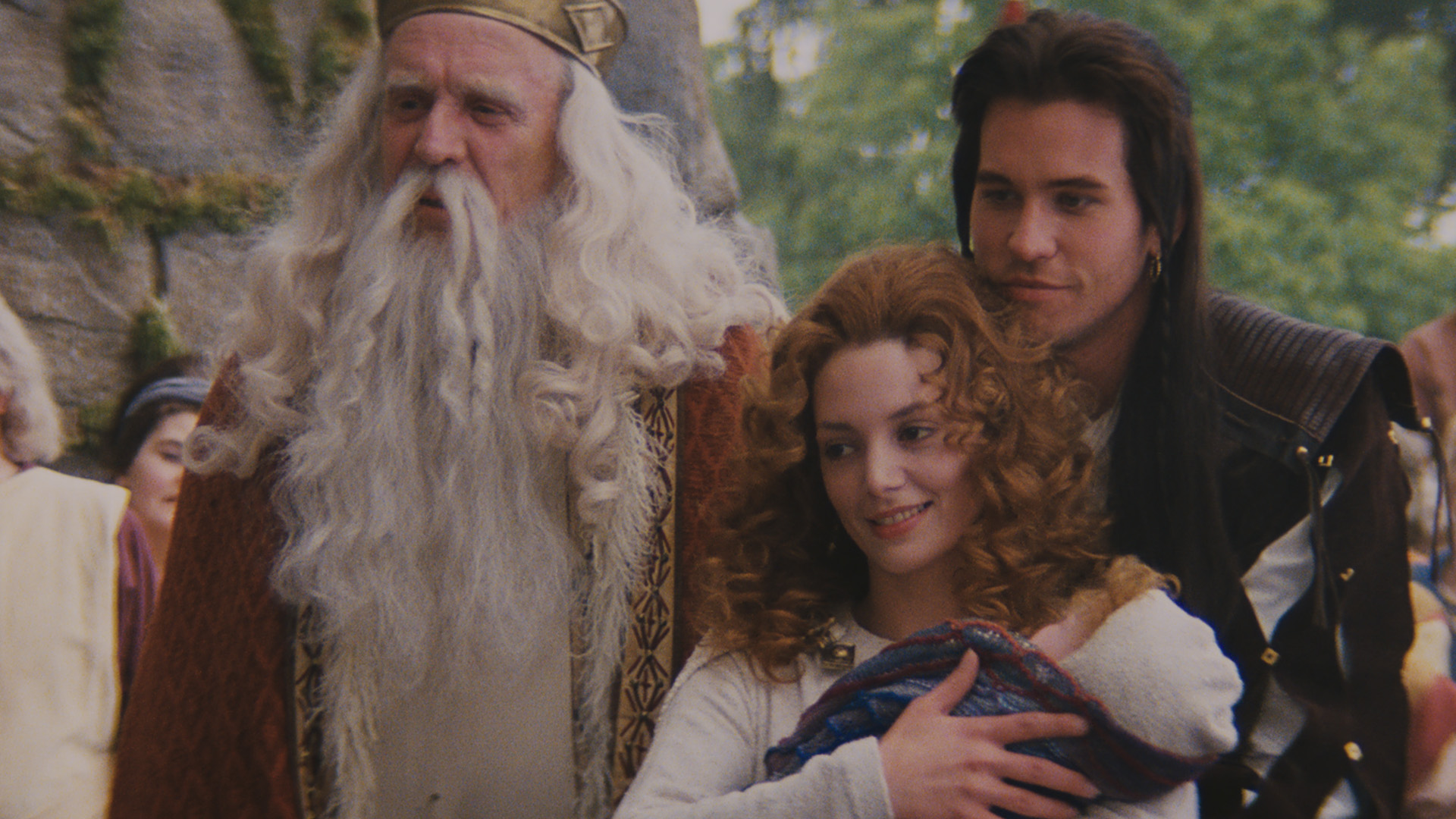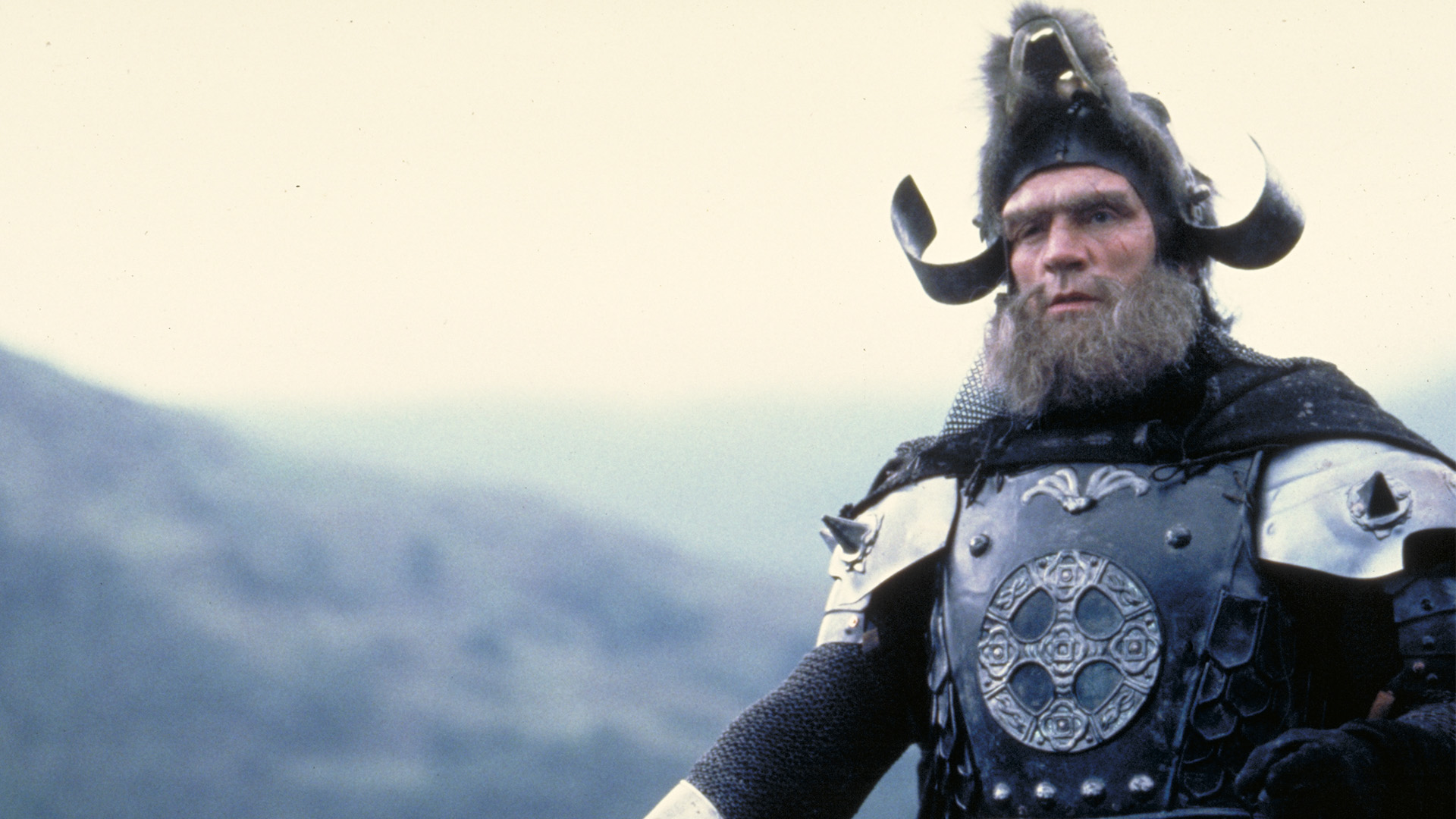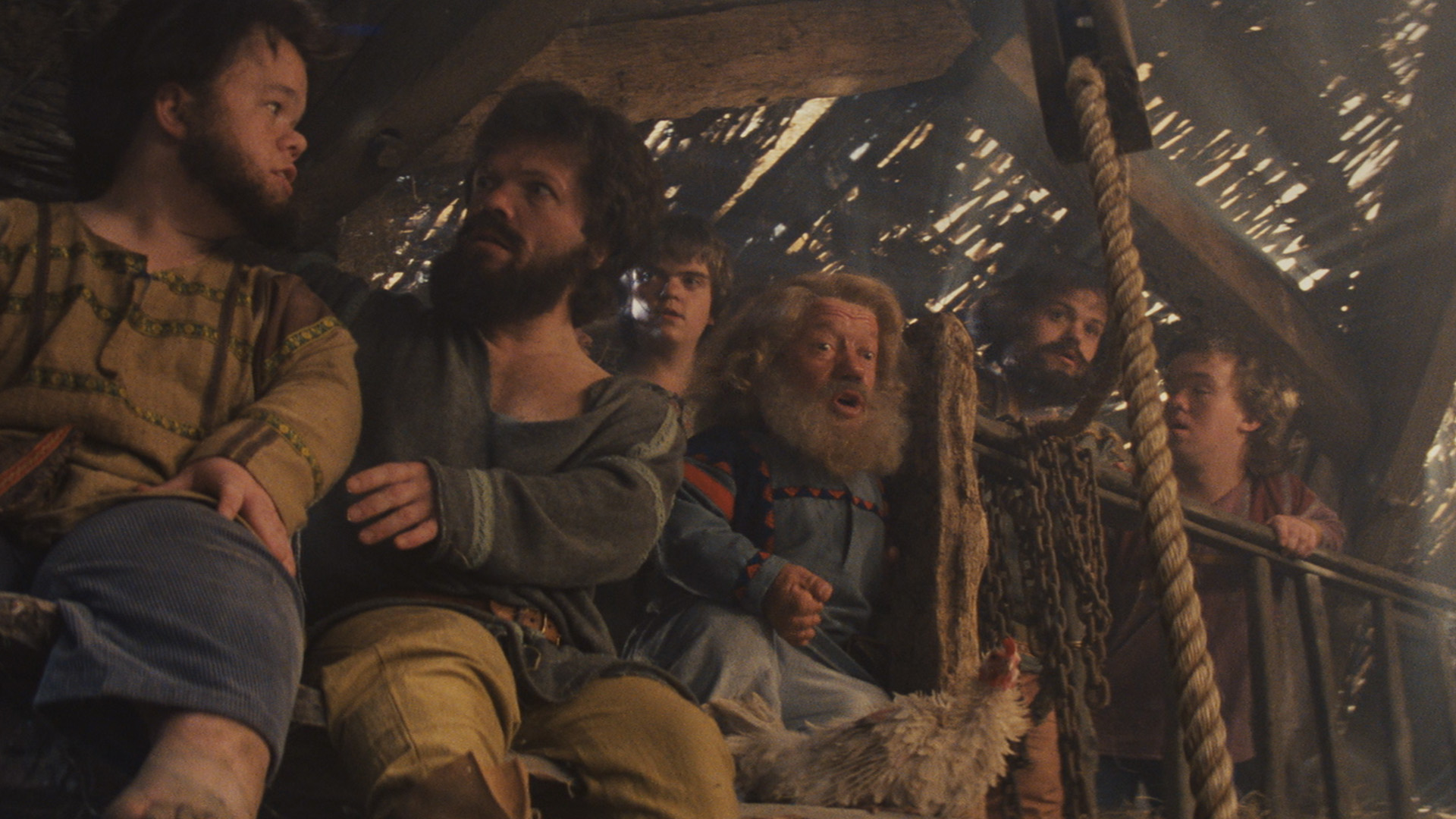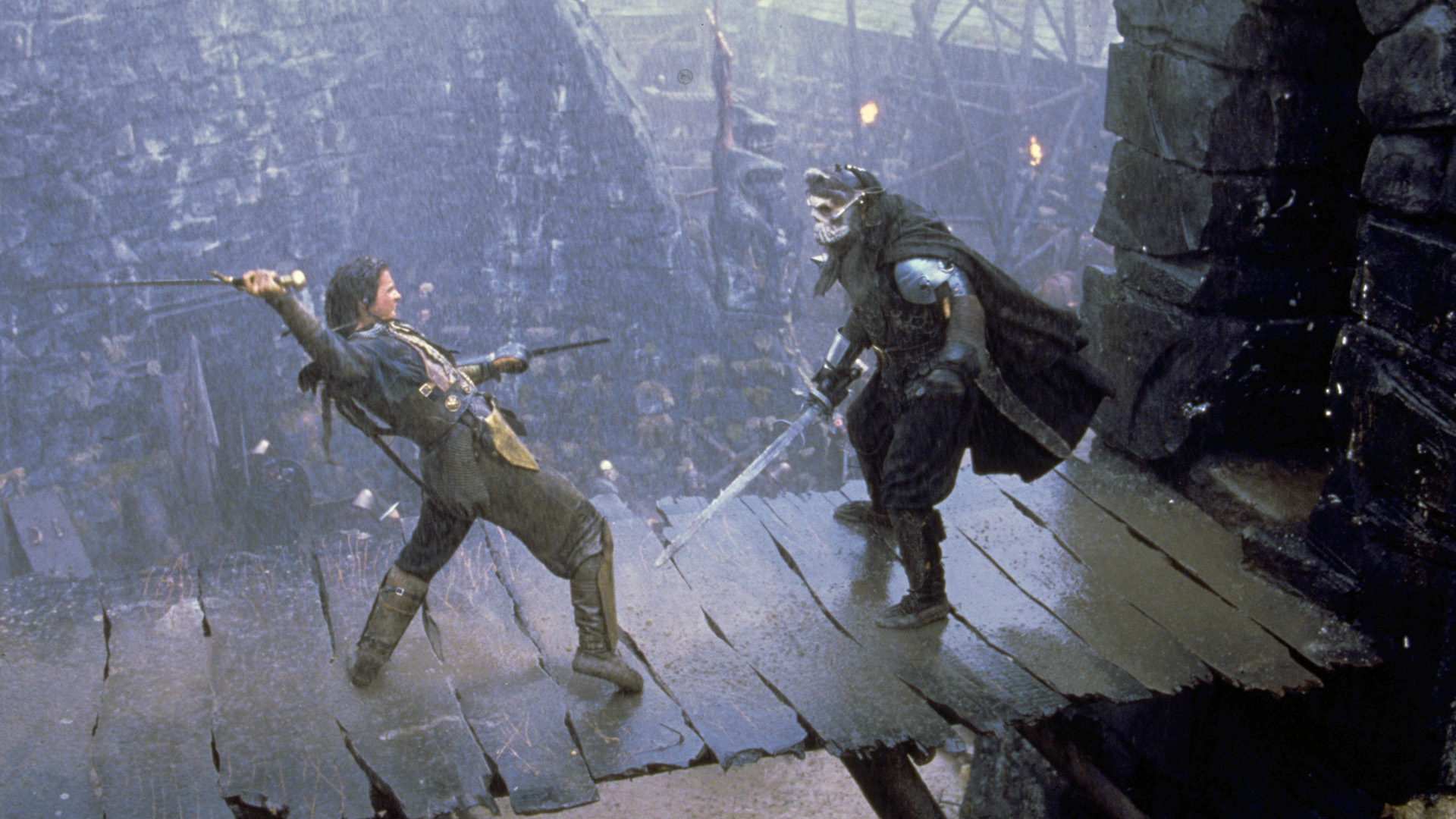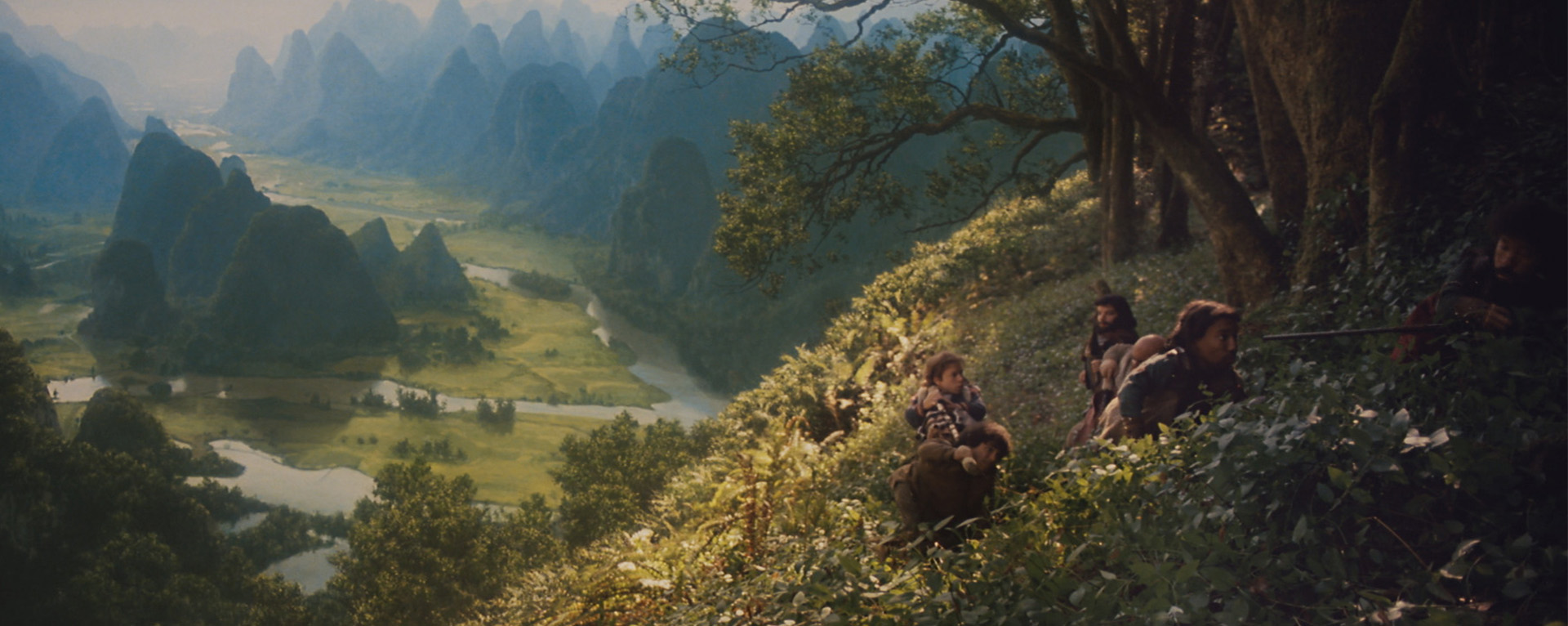“Forget All You Know” Behind the Story and Creation of Willow
Hidden Details and Insights About the Lucasfilm Classic
“Journey to the far corners of your imagination,” announced the Willow press kit in 1988, “to a land of myth and magic, where dream and reality live side by side…to a place that never existed, a time that never was.”
Whether you’ve known it for over thirty years or are just discovering this adventure for the first time, Willow is a film that endears itself to many. But how much do you know, or think you know, about this classic production? From the Nelwyn Valley to the gates of Tir Asleen, we’ll test your knowledge with insights both from behind the camera and within Willow’s mysterious fantasy world.
Spoilers lie ahead!
Kenny Baker Speaks!
“Well, who’ll do that?” exclaims a Nelwyn villager when it’s announced that the mysterious baby found by Willow and his family must be taken far away. For Star Wars fans, the questioner (speaking his only line in the entire film) may seem familiar, for he is none other than Kenny Baker (1934-2016), the original actor behind R2-D2.
Well over two hundred little people (more than were seen in The Wizard of Oz) were recruited as extras for a week’s shooting on location in the United Kingdom. Among the uncredited Nelwyn villagers was Baker, who performed in the jovial band at the Nelwyn fair (and humorously blew a massive alphorn upon the High Aldwin’s arrival). Another villager was Baker’s longtime performing partner Jack Purvis, who also played multiple Star Wars roles.
Although Kenny Baker appeared in more than half a dozen Lucasfilm productions during his career, the fated question in Willow was his only explicit line of spoken dialogue.
A Daughter of Good…and Evil
“She’s very tough,” said actress Joanne Whalley in 1988 about her character Sorsha. Though a princess, “she is a young woman who’s in control and has a certain amount of power and responsibility and not just some girl wandering around the castle in a long dress,” Whalley explained. “But she also has great vulnerability which comes into the story and it changes her. She’s a very real character.”
Though daughter of the evil sorceress Bavmorda, Sorsha’s father is in fact the noble-hearted king of Tir Asleen. He was seduced and manipulated by Bavmorda as she left the kingdom defiled, taking young Sorsha away. (The good king is among those encased in stone at Tir Asleen, and in a deleted scene even speaks to Sorsha asking for help.)
Though she doesn’t know her father, his goodness innate within her contributes to Sorsha’s ultimate redemption. At the film’s conclusion, the king can be seen reunited with his daughter when they bid farewell to Willow, the castle of Tir Asleen at last restored to its former beauty and its inhabitants freed from their quartz-like prisons.
From Tauntauns to Brownies
In 1988, Industrial Light & Magic (ILM) visual effects supervisor Dennis Muren explained that one of the biggest challenges to realize in Willow was the Brownies. “They’re in so many scenes that it becomes quite difficult to try and make them look like they are really in the scenes – and doing them with real people, not dolls or anything like that.” Muren and the ILM crew used a technique first developed for The Empire Strikes Back where a Tauntaun runs across the icy tundra of Hoth.
“It’s an approach where you photograph the object you want to put in a scene and you photograph it full frame, you don’t shoot it real small like it’s in the scene,” Muren explained. “We’re making them real big so we have a good image. Then that film is re-photographed…[and] matched to fit into the background scene that was shot in England.” One of the animation camera operators assigned to this task was John Knoll, who had joined ILM just a couple years earlier.
A Great Swordsman
Among the allusions to Madmartigan’s complex past is his unusual, highly adept sword-fighting technique. Swinging his weapon through the air, Madmartigan easily dispatches his enemies with unusual agility. As a son of nobles from Galladoorn, Madmartigan was the last to be trained in a provincial fighting style from distant lands, courtesy of an aging teacher who saw great promise in his ability. “The difference between that art and the hefting of a broadsword,” explained the Willow novelization by Wayland Drew, “was the difference between a wasp and a charging bear, between a viper and a raging bull.” Though he became a near unrivaled warrior, Madmartigan’s skill did little to warm his heart to the suffering of those around him.
Recognize General Kael?
When it isn’t hidden behind his terrifying skull-helmet, keen-eyed Lucasfilm fans may recognize the formidable visage of General Kael. Actor Pat Roach (1937-2004) was an accomplished martial artist and wrestler who played not one but two characters in Raiders of the Lost Ark: an imposing Sherpa who brawls with Indy in Nepal and the iconic German airplane mechanic who meets a grizzly end.
Roach became a favorite brute in the Indiana Jones series, playing the fearsome chief Thuggee guard in Indiana Jones and the Temple of Doom and a cunning Gestapo officer in Indiana Jones and the Last Crusade (though most of his role in that film was cut). As a major villain second only to Queen Bavmorda, his performance as General Kael was the most impactful of his Lucasfilm appearances.
What’s in a Nickname?
Madmartigan sometimes refers to the baby Elora Danan as “Sticks.” In the final film, the inspiration for the nickname is omitted, but in the script, there is an exchange when Madmartigan claims the child is skinny. “Look at her arms,” he says. “They look like a couple of sticks. [Willow’s] not feeding you enough, is he?”
The Fabled Missing Acorn
For some time, Willow fans speculated about why the title character only uses two of the three magic acorns which the High Aldwin gifts to him. Willow accidentally drops one acorn during the battle at Tir Asleen, turning a wood plank to stone, and in the finale he throws another at Bavmorda in hopes to do the same to her (but the wicked sorceress overcomes its power). That leaves one unaccounted for!
In 2013, the mystery was finally uncovered in a newly revealed deleted scene. Arriving at the lake where the sorceress Fin Raziel lives in exile on a small island, Willow encounters a strange boy, who tells the Nelwyn not to travel across the lake before disappearing underwater. Later, he attacks Willow’s boat and transforms into a monstrous fish. After nearly being consumed by the terrible creature, Willow is able to throw a magic acorn at his foe, sending the stone fish straight to the bottom. Though a hair-raising bit of action, the scene was cut due to complications concerning the visual effects.
Every Nelwyn Needs a Trade
Willow’s April 1987 script contains an exchange between Willow, Meegosh, and Madmartigan omitted from the final film. Locked inside a prison cage, the Daikini warrior attempts to convince the Nelwyn to share some water. “These are bad times, my friend,” he says to Meegosh, “Good men locked in cages, criminals running free. It doesn’t pay to be honest. You a wood-cutter?” Meegosh clarifies that he is in fact a miner, and Willow a farmer. “I knew it!” says a desperate Madmartigan. “Miners, farmers: you’re victims! Yep, you and me: victims of a rotten corrupt world.”
Willow Ufgood’s loyal friend Meegosh is a miner from the Copper Hills of the Nelwyn Valley. The leather miner’s apron he sports reflects this trade (and is likely helpful in avoiding some painful arrow points courtesy of the Brownies). Early in the film, the loutish Burglekutt threatens Willow that he’ll “end up working in the mines” if he fails to make the payments on his farm, implying that Meegosh may be of lesser privilege than his friend. Willow seems to care little for the social distinctions that preoccupy his creditor. In the film’s novelization, Meegosh fantasizes that his and Willow’s heroic exploits will earn him a promotion to mine foreman.
Willow, starring Warwick Davis, executive produced by George Lucas, and directed by Ron Howard, is now available to stream on Disney+
